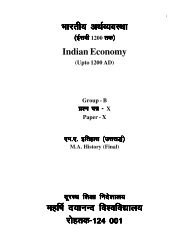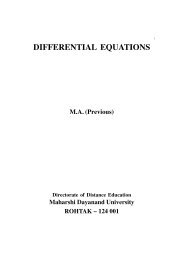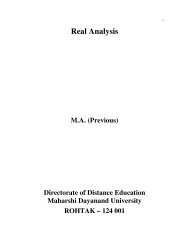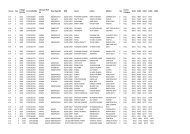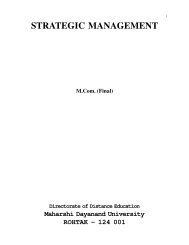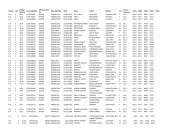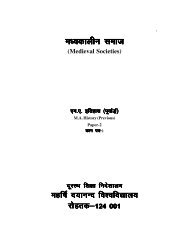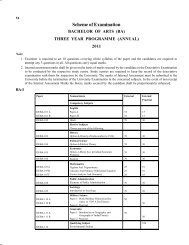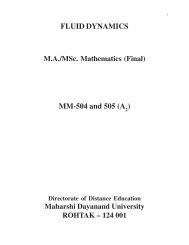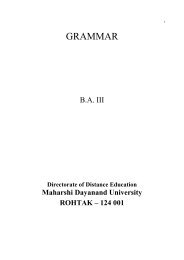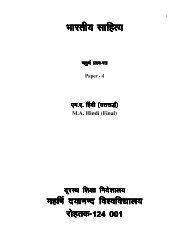Advanced Abstract Algebra - Maharshi Dayanand University, Rohtak
Advanced Abstract Algebra - Maharshi Dayanand University, Rohtak
Advanced Abstract Algebra - Maharshi Dayanand University, Rohtak
Create successful ePaper yourself
Turn your PDF publications into a flip-book with our unique Google optimized e-Paper software.
22<br />
ADVANCED ABSTRACT ALGEBRA<br />
a mu = a<br />
a mu−1 = e<br />
O(a) | (mu − 1)<br />
n | (mu−1)<br />
Hence, there exists an integer v such that<br />
nv = mu−1<br />
mu − nv = 1<br />
gcd(m, n) = 1 .<br />
This completes the proof of the theorem.<br />
Theorem 11. Every subgroup H of a cyclic group G is cyclic.<br />
Proof. If H = {e}, then H is obviously cyclic. So, let us suppose that H ≠ {e}. If a λ ∈ H , then a −λ ∈ H.<br />
So, we can find a smallest positive integer m such that a m ∈ H. Therefore<br />
< a m > ⊆ H (i)<br />
Moreover,<br />
Therefore<br />
a λ ∈ H λ = qm, q ∈ Z<br />
a λ = a qm<br />
= (q m ) q ∈ < a m ><br />
< a λ > ⊆ < a m ><br />
It follows from (i) and (ii) that<br />
H = < a m ><br />
And hence H is cyclic.<br />
H ⊆ < a m > (ii)<br />
Theorem 12. Let G = < a > be a cyclic group of order n and H be a subgroup of G generated by a m , m<br />
≤ n. Then<br />
n<br />
O(H) =<br />
gcd(m,n)<br />
Proof. We are given that<br />
H = < a m ><br />
Let gcd(m,n) = d, then we can find an integer q such that<br />
m = qd<br />
a m = a qd<br />
But a qd ∈ < a d >, where < a d > is a subgroup generated by a d . Therefore<br />
a m ∈ < a d ><br />
H = < a m > ⊆ < a d > ….<br />
Since gcd (m, n) = d, we can find u, v ∈ Z such that<br />
d = un + vm<br />
a d = a un+vm<br />
(i)<br />
= a un . a vm<br />
= a vm (Θ a un = e)<br />
But a vm ∈ < a m > = H . Therefore<br />
a d ∈ H<br />
< a d > ⊆ H …..<br />
(ii)



